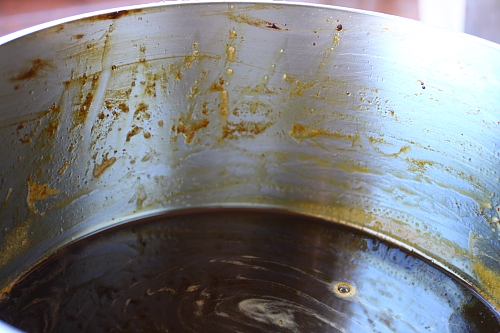How to make mosto cotto
This past weekend we had our annual wine-making day. We buy Zinfandel grapes from a farmer (no, we don’t grow our own grapes here in the Bay Area) and then crush them in my dad's basement, which is where he makes and stores wine, and cures salumi.
My entire family works for a couple of hours until all the grapes are crushed. I then steal some of the juice to make mosto cotto.
The ancient Greeks in Calabria were the ones who began cooking grape juice and using it as a sweetener. In fact the original mostaccioli cookies were made with flour and mosto cotto. People in Calabria would even drizzle it on top of freshly fallen snow for a scirobetta. It is very sweet, with a concentrated grape flavor and a taste of caramel. Nowadays it has been replaced with honey. In other regions of Italy mostocotto is also known as sapa.
There are many traditional desserts still made in Calabria that use mosto cotto, most of them at Christmas time. People use it to sweeten cuccia, a porridge-like dessert of cooked wheat berries for Santa Lucia Day, December 13. It is also used in the filling of petrali, cookies filled with dried figs and nuts, as well as a tossing for turdilli, a sweet fried dough.
I think it's wonderful to drizzle on top of pecorino cheese and pears, or ice cream, or homemade ricotta. You can use it wherever you would use a dark honey.
To make mosto cotto you must buy wine grapes that are high in sugar, which means that ordinary table grapes won’t work. After crushing them, you get unfiltered grape juice:
You can see the seeds and skins still in the juice. After you filter it, bring the juice to a boil in a pot, then skim it:
Slowly cook it until it is reduced by 2/3 the original volume.
This will take close to 2 hours. Watch it carefully towards the end so you don’t over-reduce it or burn it. It should have the thickness of maple syrup:
Cool the syrup, strain it through a fine-mesh sieve, and decant it into clean bottles with a cork or clasp seal. Store it in a cool, dark pantry or refrigerate. It will keep for at least a year.
I hope that some of you who have access to wine grapes will try this out; making it has become a lost art, even in Calabria.






